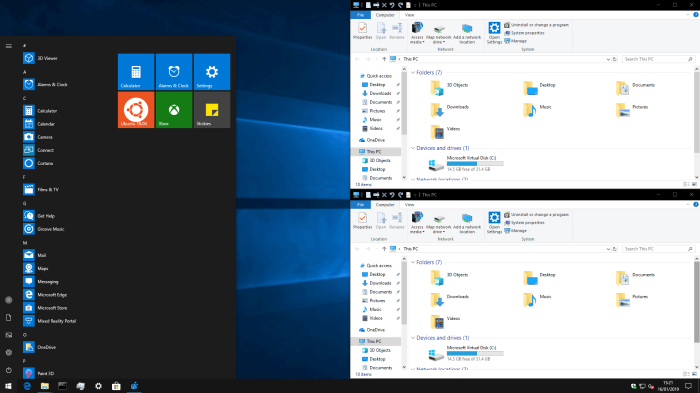How to get dark theme title bars in Windows 10, without changing your accent colour
4 min. read
Published on
Read our disclosure page to find out how can you help Windows Report sustain the editorial team Read more

Windows 10’s dark theme has been undergoing further development in recent Insider builds, integrating it more deeply into the interface. More shell components and apps now support dark theme, including the console scrollbars and title bar. However, it is already possible to get dark title bars for every window – provided you’re comfortable using a registry hack.
Even with dark theme enabled, Windows 10 uses white title bars for desktop apps by default. You can change this by using a dark accent colour and choosing to show the accent colour on title bars in Settings. This method is limited though – Windows prevents you from using extremely dark shades, and in any case you may want to retain your current accent colour. If you want black title bars with a blue accent colour, you’re out of luck.
Prerequisites
To achieve this effect, you’ll first need to head to the “Settings” app. Open the “Personalisation” category and click to the “Colours” page. Make sure the “Title bars” checkbox is ticked under “Show the accent colour on the following surfaces” section. You should also make sure you’ve selected your desired accent colour – if you change it later, you will need to repeat this procedure to reinstate your black title bars.
Finding the registry node
Next, search for “regedit” in the Start menu and hit enter to launch it. At this point, it’s time for our routine reminder – registry edits can have unforeseen consequences for your system and are not supported by Microsoft. This trick may break or stop working in the future and you use it at your own risk.
Navigate to the following key:
HKEY_CURRENT_USER\SOFTWARE\Microsoft\Windows\DWM
If you have a recent build of Windows 10, you can copy and paste the key directly into the registry editor’s address bar. Otherwise, you’ll need to drill down through the registry nodes yourself using the tree view in the Registry Editor’s left pane.
Before we get editing, one word of warning: it’s possible some of the keys mentioned in the next section don’t yet exist on your system. If you can’t see a mentioned key, create it by right-clicking the Registry Editor window and selecting “New”, then “DWORD (32-bit value)”. Name the key according to the instructions given below.
Black title bars with an accent colour
In the right pane, displaying the values in the registry node, double click the “ColorPrevalence” key to edit its value. Set it to “1” (without the quotes) and click OK.
Next, double click the “AccentColor” key and change its value to “0d0d0d” – this is the hexadecimal colour code to use for the title bars. Unfortunately, extremely dark values appear to be rejected by Windows, so a simple “000000” for a full black doesn’t work. You can try different colour codes to fine tune your results.
Finally, edit the “AccentColorInactive” key and set its value to your chosen colour code. This defines the title bar colour of apps which are inactive and in the background on your desktop. You’re free to use a different shade here if you’d prefer to make inactive apps more visually distinct from the foreground app.
That’s all there is to it! The changes should apply immediately once you select or open windows on your desktop. You’ll now have black title bars while preserving your regular accent colour used in the Start menu, Action Centre and other areas of the interface.
You can finetune the title bar effect to suit your taste using the AccentColor and AccentColorInactive registry keys. Just remember that if you change your system accent colour in settings, you may need to run through these steps again to restore your black title bars.
Attribution: Reddit user BatDogOnBatMobile was the first to publish these steps.













